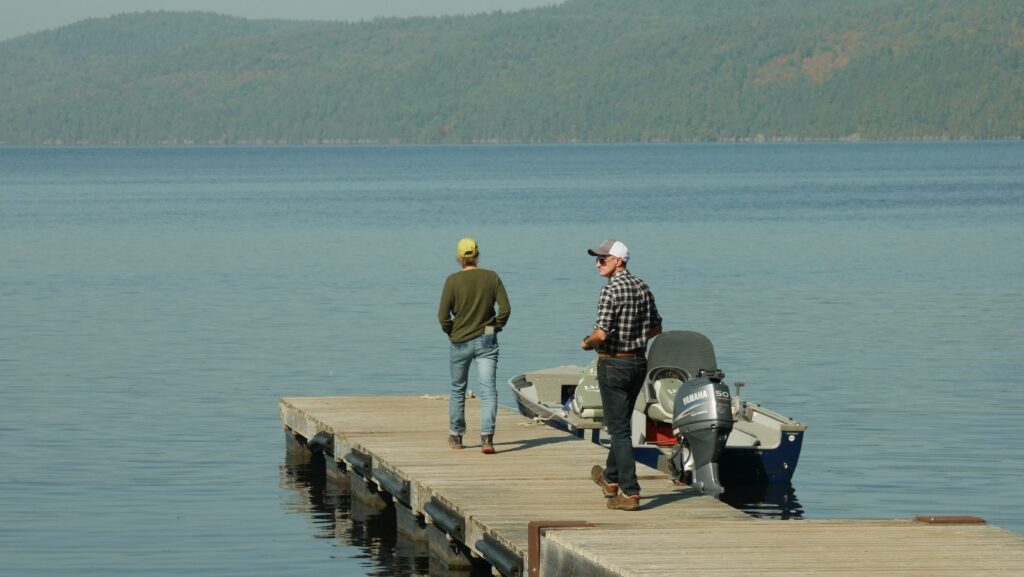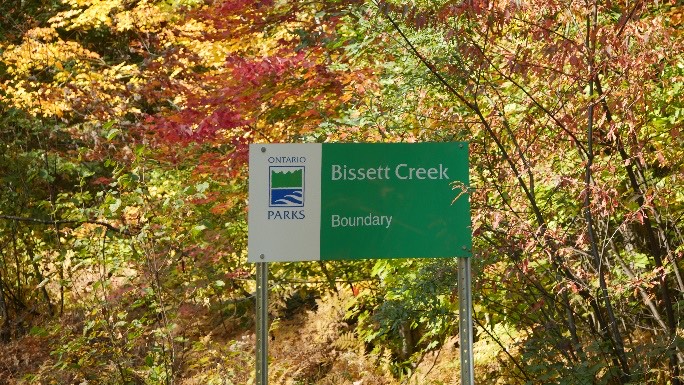A Glimpse into Environmental Harmony: A Day at ‘The Gap
By Natalie Jackett,
Coordinateur(rice) de la conservation de la GAP | GAP Conservation Coordinator
Société pour la nature et les parcs du Canada – Section Vallée de l’Outaouais
Canadian Parks and Wilderness Society – Ottawa Valley Chapter
On Friday September 29th, 2023, I had the wonderful opportunity of Visiting “The Gap” region, and hopeful the first of many for my time at Canadian Parks and Wilderness Society Ottawa Valley Chapter. “The Gap” is about 200 kilometers northwest of Ottawa in the united township of Head Clara and Maria and spans 18km at its widest from Algonquin park to the Ottawa river. Site visits and field work are no doubt the highlights for many people who work in conservation and parks. While you might figure that as an avid outdoors person and environmentalists it’s the large wonders like vast rivers, raging waterfalls, and imposing old growth groves that inspire wonder, for myself however it’s often the interfaces of humans as apart of nature and our impact on it that spark my curiosity and imagination.
On our carpool from the National Capital Region early in the morning a fog seems to grow thicker the further up the Ottawa valley we progressed, however by noon when we had reached Driftwood provincial park the fog had cleared revealing the reservoir west of the Des Joachims Hydroelectric dam, and the mouth of the Dumoine river. At that moment my job and its impact became real and not some abstract thing in some far away place I had never visited but just across the river in protected area our office advocated for protection and secured from the Government of Quebec in 2018. While the view and realization were humbling, I began the imaginative process of deciphering our human footprint and influence on the land is a small pleasure I actively practice when visiting new land.

For instance, we can infer that the Highway 17, the road we drove in on was not always the primary mode of transportation through this valley. For thousands of years birch bark canoes used by the ancestors of the Algonquin people who made canoes from the birch that still line the shores of this river to this day. During colonization a combination of steamboat and horse drawn railway would have been used to move early European settlers through the area.
Then in the early 19th century, after only a few decades, the steam ship horse drawn railway system would be obsolete with the Canada central railway would begin full operation from Mackey station to Mattawa in 1880. Later during the post war boom and the growing demand for household electricity the natural banks of the rivers in the gap area would have been flooded by the construction and filling of the Des Joachims Hydroelectric dam creating the shores seen during my visit to driftwood. this change would have also brought new recreation that would have been otherwise too dangerous on the rapids of the Ottawa river such as pleasure craft boating.

It was also likely that around this time the Railway would have fallen into disuse and the highway would have been widened, straightened and flattened for the surging primacy of the automobile and with the automobile new delights such as luxury RV camping who we happened upon our visit to driftwood. Hydro Electric, hydrocarbon pipelines, highways and railways all bisect “The Gap” making for a unique challenge to conservation and preservation of this vital wildlife corridor. Not to mention all this development has happened in a relatively short period of time causing massive disruptions to ecosystems that in the past, could only be measured by millennia. with colonization and industrialization, the scale of change to these ecosystems is well documents. Wildlife Islands lead to biodiversity loss and obstacles to the long-term health of all species. but still the Ottawa valley stands out in southern Ontario for its high concentration of parks, high degree of connectivity, intact wildlands and community assets. I learned this during our short stop in deep river with Bruce a proud Canadian Parks and Wilderness Society donor who concerned about the impacts of climate change and development on the integrity of the biodiversity and ecological value this area has to offer.

Ultimately through my first site visit to my project area as coordinator I have learned that Canadian Parks and Wilderness Society Ottawa Valley has both great potential and great obstacles to overcome in order to advocate for the long-term protection of this area. In order to achieve this, we need to engage diverse community representatives, first nations, and other stakeholders to determine what the best path forward is to protect this critical wildlife corridor for future generations.
